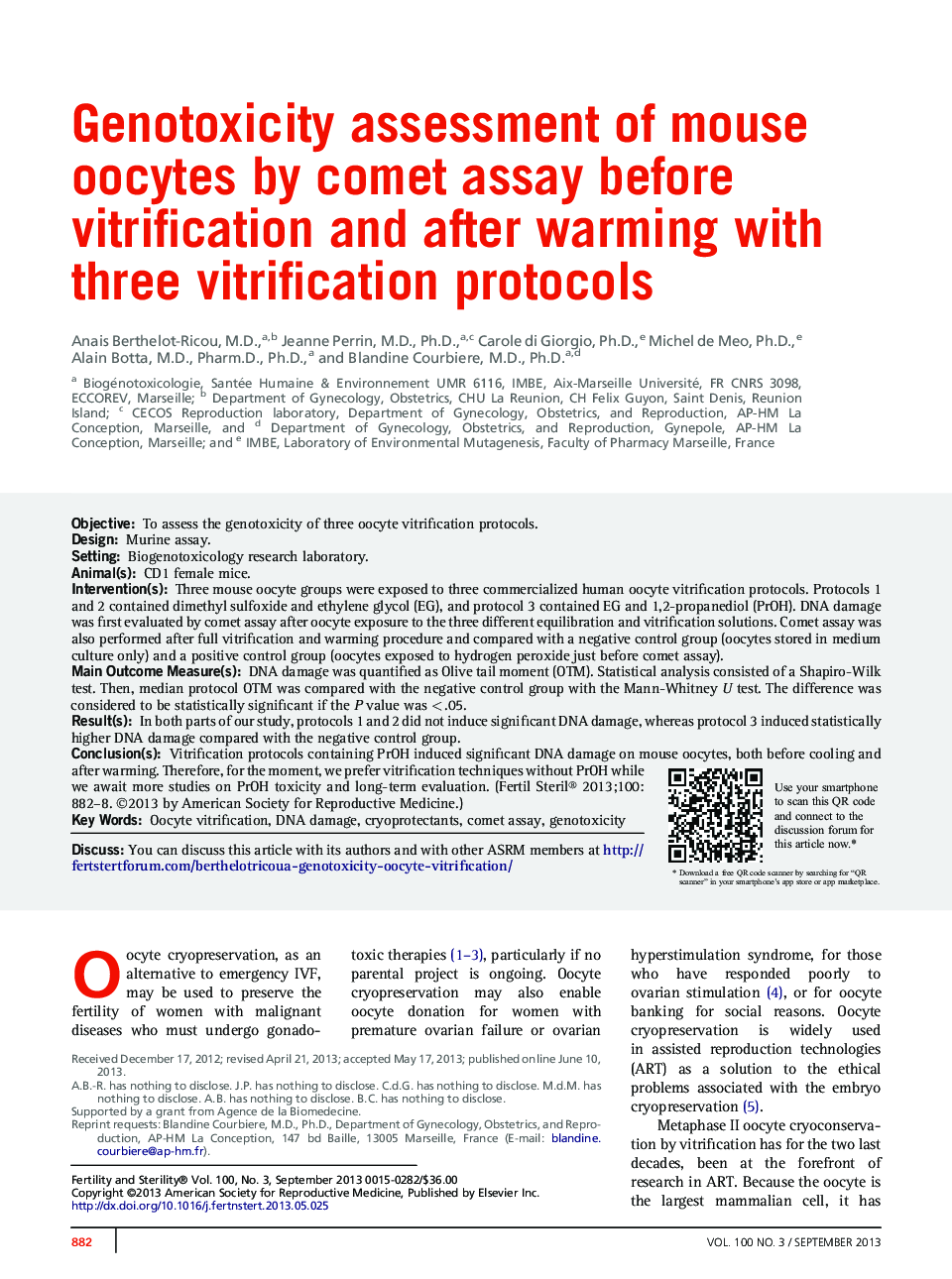| Article ID | Journal | Published Year | Pages | File Type |
|---|---|---|---|---|
| 3934855 | Fertility and Sterility | 2013 | 7 Pages |
ObjectiveTo assess the genotoxicity of three oocyte vitrification protocols.DesignMurine assay.SettingBiogenotoxicology research laboratory.Animal(s)CD1 female mice.Intervention(s)Three mouse oocyte groups were exposed to three commercialized human oocyte vitrification protocols. Protocols 1 and 2 contained dimethyl sulfoxide and ethylene glycol (EG), and protocol 3 contained EG and 1,2-propanediol (PrOH). DNA damage was first evaluated by comet assay after oocyte exposure to the three different equilibration and vitrification solutions. Comet assay was also performed after full vitrification and warming procedure and compared with a negative control group (oocytes stored in medium culture only) and a positive control group (oocytes exposed to hydrogen peroxide just before comet assay).Main Outcome Measure(s)DNA damage was quantified as Olive tail moment (OTM). Statistical analysis consisted of a Shapiro-Wilk test. Then, median protocol OTM was compared with the negative control group with the Mann-Whitney U test. The difference was considered to be statistically significant if the P value was <.05.Result(s)In both parts of our study, protocols 1 and 2 did not induce significant DNA damage, whereas protocol 3 induced statistically higher DNA damage compared with the negative control group.Conclusion(s)Vitrification protocols containing PrOH induced significant DNA damage on mouse oocytes, both before cooling and after warming. Therefore, for the moment, we prefer vitrification techniques without PrOH while we await more studies on PrOH toxicity and long-term evaluation.
